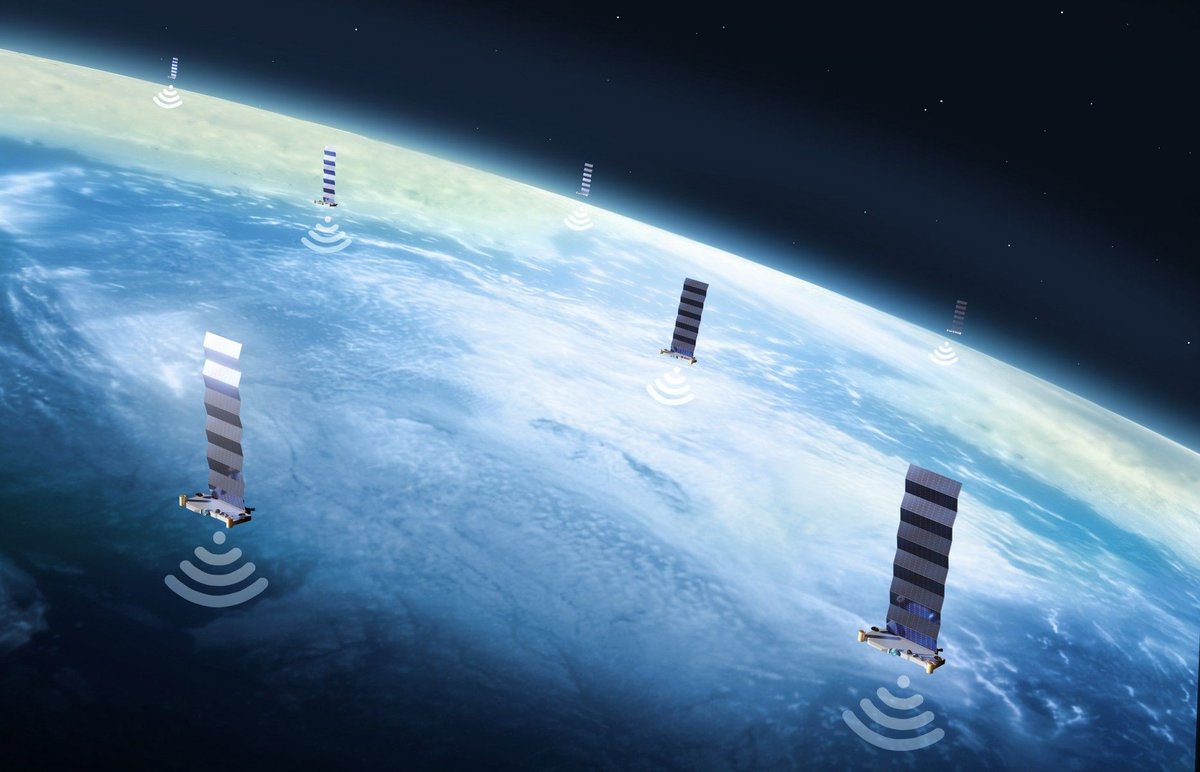We are all familiar with the atmosphere of the Earth and part of this, the ionosphere, is a layer of weakly ionized plasma. It extends from 50 to 1,500 km above the planet. It’s a diffuse layer but sufficient to interfere with satellite communications and navigation systems too. A team of researchers have come up with an intriguing idea to utilise millions of mobile phones to help map the ionosphere by relying on their GPS antennas.
Continue reading “Millions of Phones Could Map the Earth’s Ionosphere”What Time is it on the Moon? Lunar GPS Needs to Know
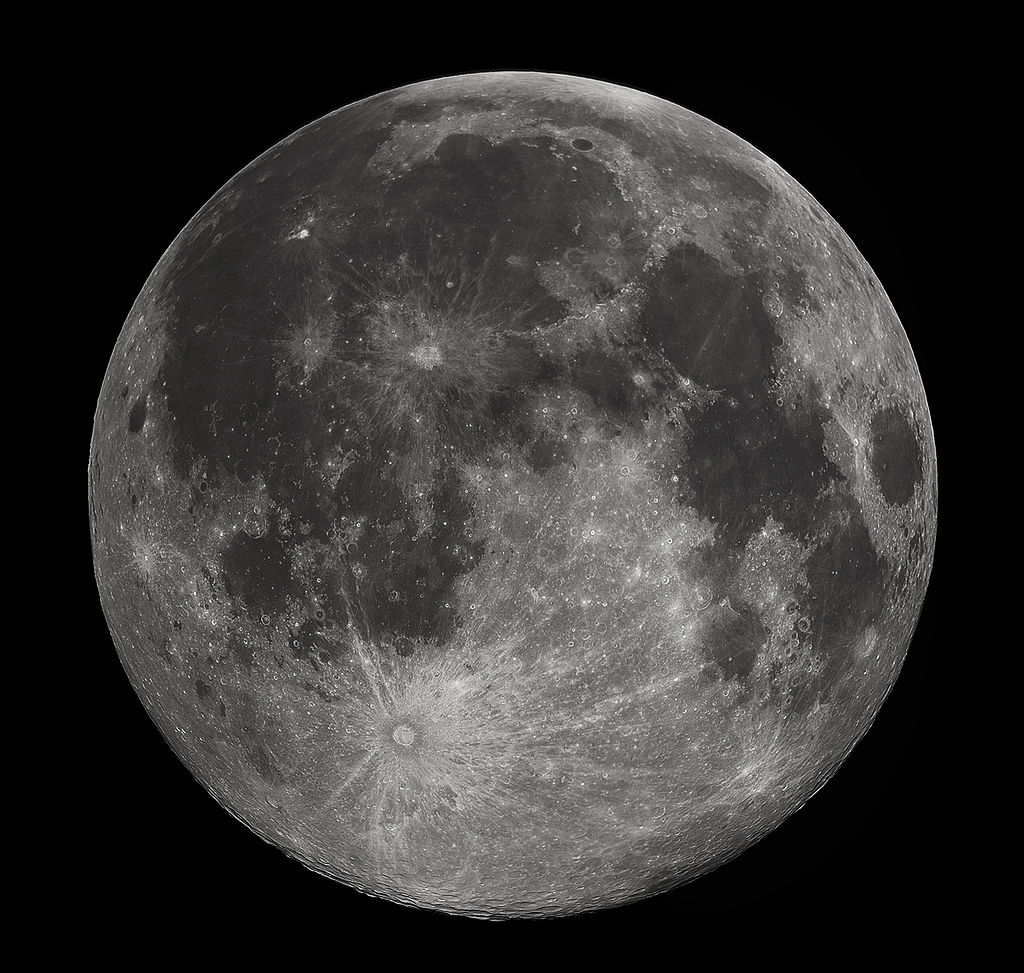
GPS is ubiquitous on Earth. It guides everything from precision surveying to aircraft navigation. To realize our vision of lunar exploration with a sustained human presence, we’ll need the same precision on the Moon.
That starts with an accurate clock.
Continue reading “What Time is it on the Moon? Lunar GPS Needs to Know”Cosmic Rays can Help Keep the World's Clocks in Sync
The world has a robust, accurate timekeeping system that regulates our clocks. Humanity uses it for everything we do, from our financial systems to satellite navigation, computer and phone networks, and GPS. But the current system is not perfect, and has vulnerabilities to cyber-attack and disruption. Given the importance of accurate timekeeping to our society (as a fundamental underpinning of life in the 21st century), experts are always looking for ways to improve the system and add redundancy. Researchers at the University of Tokyo have taken a big step in this direction, developing a new method of time synchronization that takes advantage of cosmic rays to calibrate the world’s clocks.
Continue reading “Cosmic Rays can Help Keep the World's Clocks in Sync”Starlink can be Used as a Navigation System too
Starlink keeps growing, and so do its capabilities. Lately, even people outside of SpaceX have even been developing capabilities for it. A team of researchers from the Ohio State University (OSU) and the University of California Irvine (UCI) has developed a way to use Starlinks networked satellites as a basic navigation tool.
Continue reading “Starlink can be Used as a Navigation System too”Astronauts in Trouble Will be Able to Press the “Take Me Home” Button

Living and working in space for extended periods of time is hard work. Not only do the effects of weightless take a physical toll, but conducting spacewalks is a challenge in itself. During a spacewalk, astronauts can become disoriented, confused and nauseous, which makes getting home difficult. And while spacewalks have been conducted for decades, they are particularly important aboard the International Space Station (ISS).
Hence why the Charles Stark Draper Laboratory (aka. Draper Inc.), a Massachusetts-based non-profit research and development company, is designing a new spacesuit with support from NASA. In addition to gyroscopes, autonomous systems and other cutting-edge technology, this next-generation spacesuit will feature a “Take Me Home” button that will remove a lot of the confusion and guesswork from spacewalks.
Spacewalks, otherwise known as “Extra-Vehicular Activity” (EVA), are an integral part of space travel and space exploration. Aboard the ISS, spacewalks usually last between five and eight hours, depending on the nature of the work being performed. During a spacewalk, astronauts use tethers to remain fixed to the station and keep their tools from floating away.
Another safety feature that comes into play is the Simplified Aid for EVA Rescue (SAFER), a device that is worn by astronauts like a backpack. This device relies on jet thrusters that are controlled by a small joystick to allow astronauts to move around in space in the event that they become untethered and float away. This device was used extensively during the construction of the ISS, which involved over 150 spacewalks.
However, even with a SAFER on, it is not difficult for an astronaut to become disoriented during and EVA and lose their bearings. Or as Draper engineer Kevin Duda indicated in a Draper press statement, “Without a fail-proof way to return to the spacecraft, an astronaut is at risk of the worst-case scenario: lost in space.” As a space systems engineer, Duda has studied astronauts and their habitat on board the International Space Station for some time.
He and his colleagues recently filed a patent for the technology, which they refer to as an “assisted extravehicular activity self-return” system. As they described the concept in the patent:
“The system estimates a crewmember’s navigation state relative to a fixed location, for example on an accompanying orbiting spacecraft, and computes a guidance trajectory for returning the crewmember to that fixed location. The system may account for safety and clearance requirements while computing the guidance trajectory.”
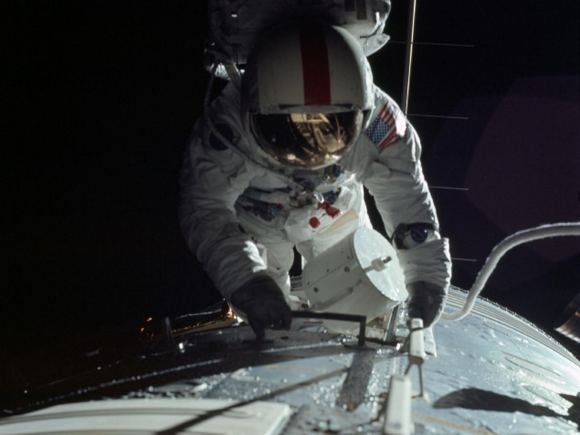
In one configuration, the system will control the crew member’s SAFER pack and follow a prescribed trajectory back to a location designated as “home”. In another, the system will provide directions in the form of visual, auditory or tactile cues to direct the crew member back to their starting point. The crew member will be able to activate the system themselves, but a remote operator will also be able to turn it on if need be.
According to Séamus Tuohy, Draper’s director of space systems, this type of return-home technology is an advance in spacesuit technology that is long overdue. “The current spacesuit features no automatic navigation solution—it is purely manual—and that could present a challenge to our astronauts if they are in an emergency,” he said.
Such a system presents multiple challenges, not the least of which has to do with Global Positioning Systems (GPS), which are simply not available in space. The system also has to compute an optimal return trajectory that accounts for time, oxygen consumption, safety and clearance requirements. Lastly, it has to be able to guide a disoriented (or even unconscious astronaut) effectively back to their airlock. As Duda explained:
“Giving astronauts a sense of direction and orientation in space is a challenge because there is no gravity and no easy way to determine which way is up and down. Our technology improves mission success in space by keeping the crew safe.”
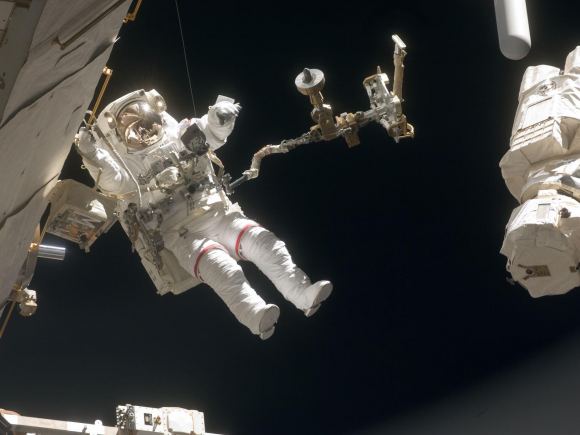
The solutions, as far as Duda and his colleagues are concerned, is to equip future spacesuits with sensors that can monitor the wearer’s movement, acceleration, and relative position to a fixed object. According to the patent, this would likely be an accompanying orbiting spacecraft. The navigation, guidance and control modules will also be programmed to accommodate various scenarios, ranging from GPS to vision-aided navigation or star tracking.
Draper has also developed proprietary software for the system that fuses data from vision-based and inertial navigation systems. The system will further benefit from the company’s extensive work in wearable technology, which also has extensive commercial applications. By developing spacesuits that allow the wearer to obtain more data from their surroundings, they are effectively bringing augmented reality technology into space.
Beyond space exploration, the company also foresees applications for their navigation system here at home. These include first responders and firefighters who have to navigate through smoke-filled rooms, skydivers falling towards the Earth, and scuba divers who might become disoriented in deep water. Literally any situation where life and death may depend on not getting lost could benefit from this technology.
Further Reading: Draper, Google Patents
Showcasing the Benefits of NASA Technology Here on Earth
Every year, NASA showcases how the technology it develops for exploring space and studying other worlds has applications here on planet Earth. It’s what known as Spinoff, an annual publication that NASA’s Technology Transfer Program has been putting out since 1976. Since that time, they have showcased over 2000 examples where NASA technology was used for the sake of creating products that had wide-ranging benefits.
For Spinoff 2017, NASA selected 50 different companies that are using NASA technology – which included innovations developed by NASA, those made with the help of NASA funding, or those produced under contract with the agency. With examples ranging from GPS and satellite imaging, to light detection and ranging (Lidar) and biomedical devices, the list of commercial applications for this year is quite impressive!
For over 50 years, the NASA Technology Transfer Program has share NASA resources with private industries, a process which is colloquially referred to as “spin-offs”. In finding the widest possible applications for NASA technology and leveraging partnerships and licensing agreements with industry, they ensure that the large investments made in space exploration find additional uses that benefit humanity here on Earth.
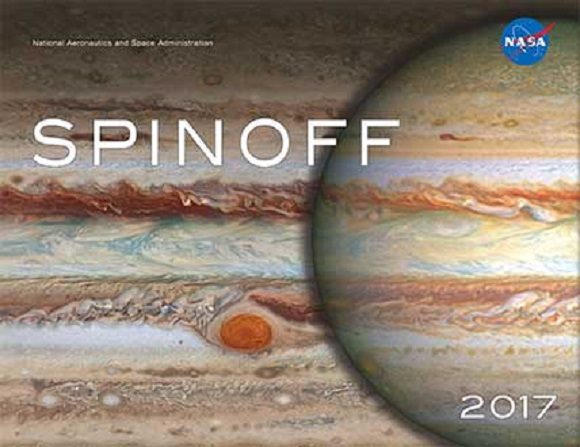
In the past, spin-offs have included memory foam, freeze-dried food, emergency thermal blankets, Dustbusters, cochlear implants, and numerous other application that have benefited the computer, medical, transportation, manufacturing and safety industries – thought not Velcro or Tang (contrary to popular conception). As Dan Lockney, the executive of NASA’s Technology Transfer program, told Universe Today via email:
“Spinoff is NASA’s annual publication featuring technologies that have left NASA’s launchpads and laboratories and moved into the public sector. We’ve published Spinoff each year since 1976, featuring about 50 of the best examples of commercialized NASA technologies each year. These range from consumer goods to public safety and medical equipment to advances in round and aire transportation.
“These commercialized technologies are often a direct outcome of the work that NASA’s Technology Transfer Program conducts. Our Tech Transfer Program works to get the technolgoes developed for NASA missions out to industry so that they can have second lives as new products and services.”
This year’s spinoffs were certainly numerous, but some are particularly worthy of mention. For instance, there is the metal oxide semiconductor (CMOS) image sensor that was developed by NASA’s Jet Propulsion Laboratory. Since its creation, it has become one of NASA’s most ubiquitous technologies, leading to the development of DSLR cameras, camera phones, and digital cameras that are available on every handheld device on the market.
And then there’s the GPS technology NASA began developing back in the 1990s, which included software capable of correcting for GPS signal errors and enabling incredible accuracy. John Deere recently acquired this technology and used it to develop a popular class of self-driving farm tractors. Today, as much as 70% of North American farmland is cultivated by self-driving tractors that rely on this technology.
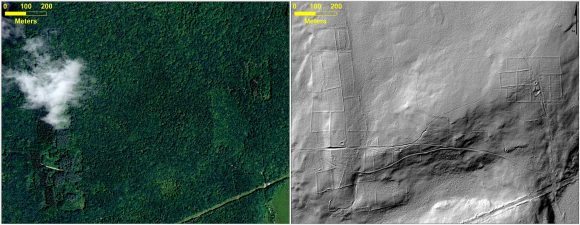
And then there is the spinoff involving NASA-developed laser imaging and ranging technology (Lidar). This technology allowed the Pheonix Lander to detect snow falling from the skies of Mars, and will be used to OSIRIS-REx mission to land on an asteroid in the coming decade. And recently, this same technology was used by a team of archaeologists to map prehistoric sites in North America where hunter-gatherers hunted bison en masse.
In addition, “Robotics Spinoffs” get a special mention in this year’s report, with homage being paid to missions like Curiosity and Juno (which have explored the surfaces and atmospheres of other planets) and space-based observatories like Spitzer, Chandra and Hubble – which have looked deep into the cosmic field. The technologies used by these missions has also had an impact in virtually every sector of the world’s economy.
The publication also includes a section called “Spinoffs of Tomorrow“, which highlights 20 technologies that are especially well-suited for commercial adaptation. These include thin-film piezoelectric and composite materials that could be used in wind turbines to generate more electricity and improve electrode durability, as well as in personal devices to generate power from mere movement.
There’s also the new Armstrong wing design that lower drags, which could make airplanes and wind turbines more efficient. The Glenn Research Center is also cited for their development of a suite of materials and methods that optimize the performance of nanomaterials by making them tougher, more resistant, and easier to process. This could be used to build super-resilient fabrics and consumer products.

Then there’s an underwater vehicle developed by JPL that uses thermally-generated changes in buoyancy to generate electricity and recharge its batteries. This technology, which enables submarines to remain underwater for years at a time, could lead to the creation of nearly self-sufficient undersea drones – something that has applications in everything from sea exploration to pipeline monitoring.
The section also makes mention of an easy-to-use device that separates DNA, RNA, and proteins outside a traditional lab environment. Originally intended for use aboard the ISS, this device could be a boon for developing nations where medical infrastructure may be limited. And there’s also a system that autonomously detects faulty wiring and reroutes around it.
As always, the development of cutting-edge technologies can have applications that go far beyond the purpose for which they were originally intended. Whether it is robotic landers or probes, miniaturized cameras, improved electronics, or advanced materials, commercial industries here on Earth have always benefited from the research, development and exploration efforts of the space industry.
And as our efforts to send astronauts to Mars, return to the Moon, and explore the outer Solar System andbeyond continue, who knows what commercial applications will emerge as a result? And in the meantime, be sure to enjoy this video which explains how NASA technology is licensed through the TTP:
Further Reading: NASA
ULA Atlas V Delivers Final GPS IIF Navigation Satellite to Orbit for USAF – Critical to Military/Civilian Users
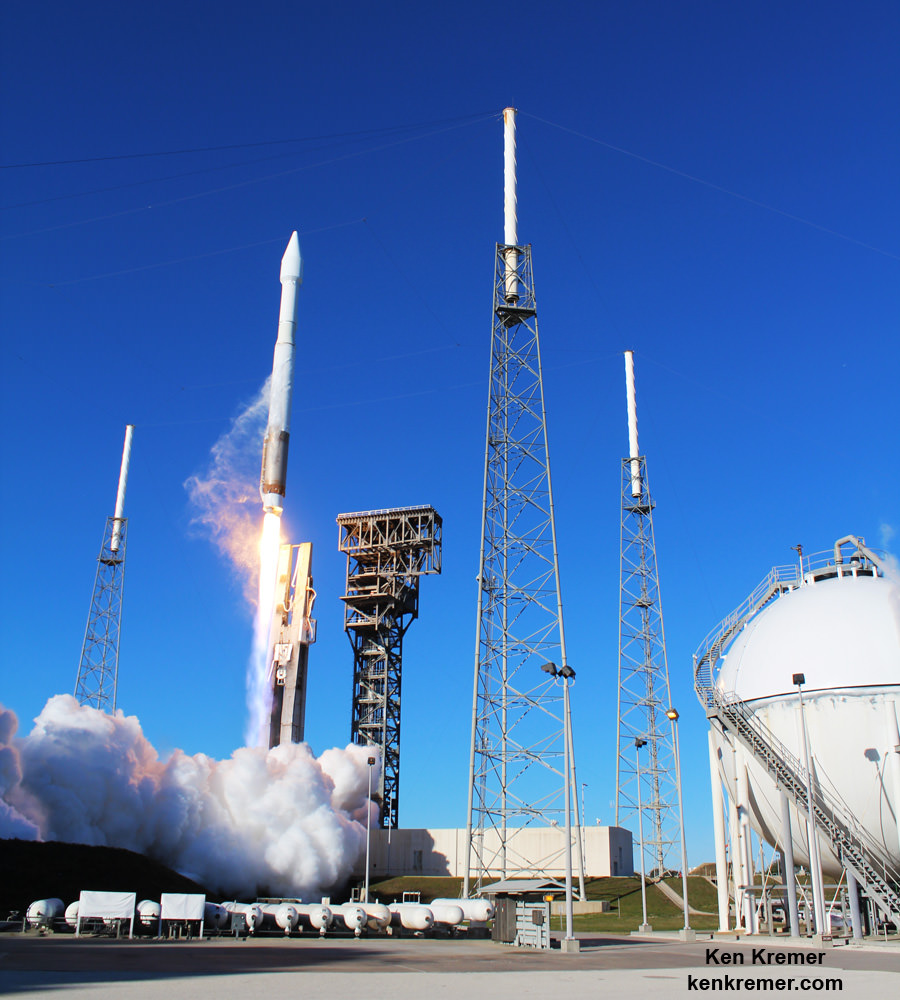

CAPE CANAVERAL AIR FORCE STATION – Despite howling winds and unseasonably frigid temperatures in the ‘sunshine state’, United Launch Alliance’s workhorse Atlas V rocket successfully blasted off this morning, Friday, Feb 5, and delivered the final GPS satellite in the IIF series to orbit for the US Air Force.
The ULA Atlas V carried the Global Positioning System (GPS) IIF-12 navigation satellite to orbit as the booster beautifully pierced the Florida skies – thus completing the constellation of next generation GPS IIF satellites that are critical to both military and civilian users on a 24/7 basis. Continue reading “ULA Atlas V Delivers Final GPS IIF Navigation Satellite to Orbit for USAF – Critical to Military/Civilian Users”
First Atlas Launch of 2016 Set For Blastoff with Air Force GPS Satellite on Feb. 5 – Watch Live
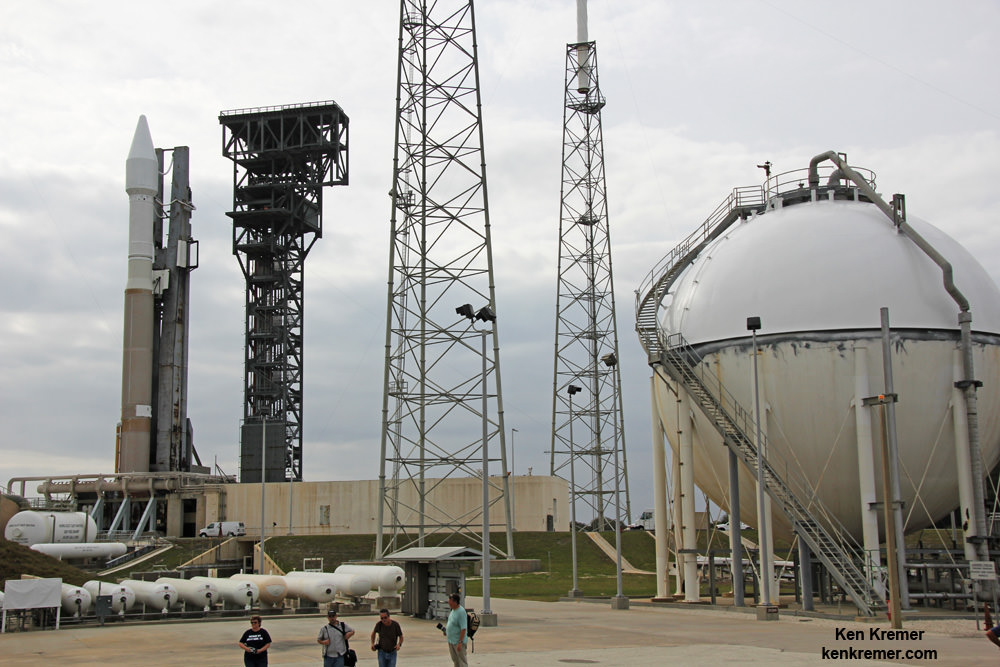

CAPE CANAVERAL AIR FORCE STATION – The first launch of 2016 from Cape Canaveral, Florida, is poised for blastoff on Friday, Feb. 5, and features a United Launch Alliance Atlas V rocket carrying a US Air Force payload that will fortify the GPS constellation of navigation satellites that is critically important to military and civilian users on a 24/7 basis.
The commercial Atlas V rocket was rolled out to Space Launch Complex-41 at Cape Canaveral Air Force Station, Florida this morning, Thursday, Feb. 4. The USAF Global Positioning System GPS IIF-12 satellite is encapsulated in the 4 meter diameter nosecone. Continue reading “First Atlas Launch of 2016 Set For Blastoff with Air Force GPS Satellite on Feb. 5 – Watch Live”
ULA Skips Competitive Bid for Air Force GPS Launch Contract, Door Opens to SpaceX
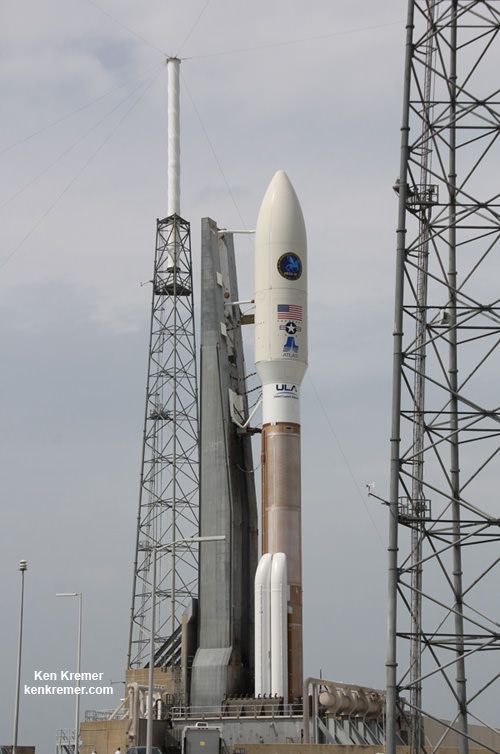
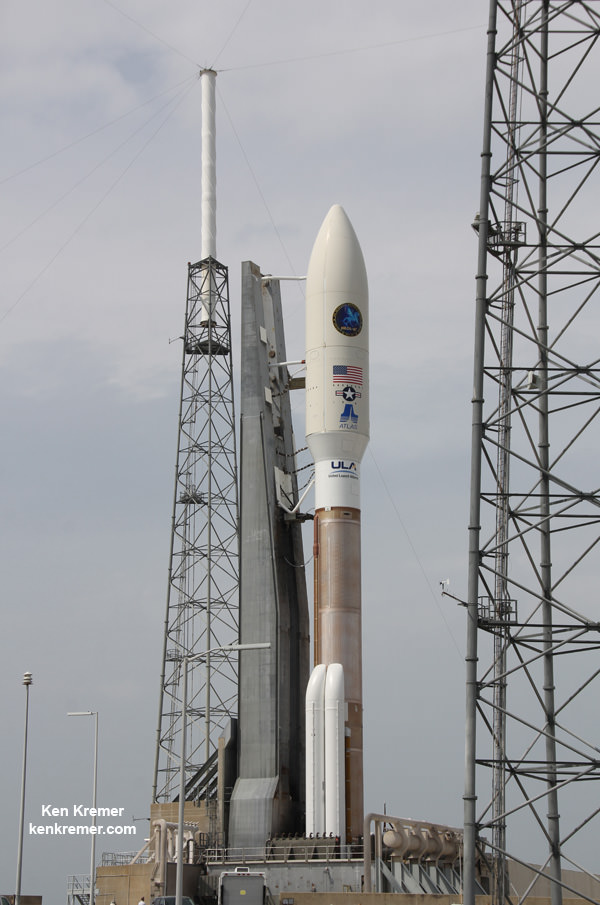
United Launch Alliance (ULA) has decided to skip the bidding competition for launch of the next generation U.S. Air Force GPS military navigation satellites, a company spokesperson confirmed to Universe Today, meaning that rival SpaceX is set to win its first military launch contract as the only other certified contract contender.
Since bids for the new GPS launch contract – which were the first to be opened by the military to a competitive bidding process since 2006 – were due on Monday, Nov. 16, the door has opened for SpaceX to apparently prevail with the launch services contract, by default, since they are the only other American company certified to launch U.S. Air Force military satellites. Continue reading “ULA Skips Competitive Bid for Air Force GPS Launch Contract, Door Opens to SpaceX”
Weekly Space Hangout – Nov. 21, 2014: New Images of Europa
Host: Fraser Cain (@fcain)
Guests:
Morgan Rehnberg (cosmicchatter.org / @cosmic_chatter)
Brian Koberlein (@briankoberlein)
Ramin Skibba (@raminskibba)
Dave Dickinson (@astroguyz / www.astroguyz.com)
Continue reading “Weekly Space Hangout – Nov. 21, 2014: New Images of Europa”



